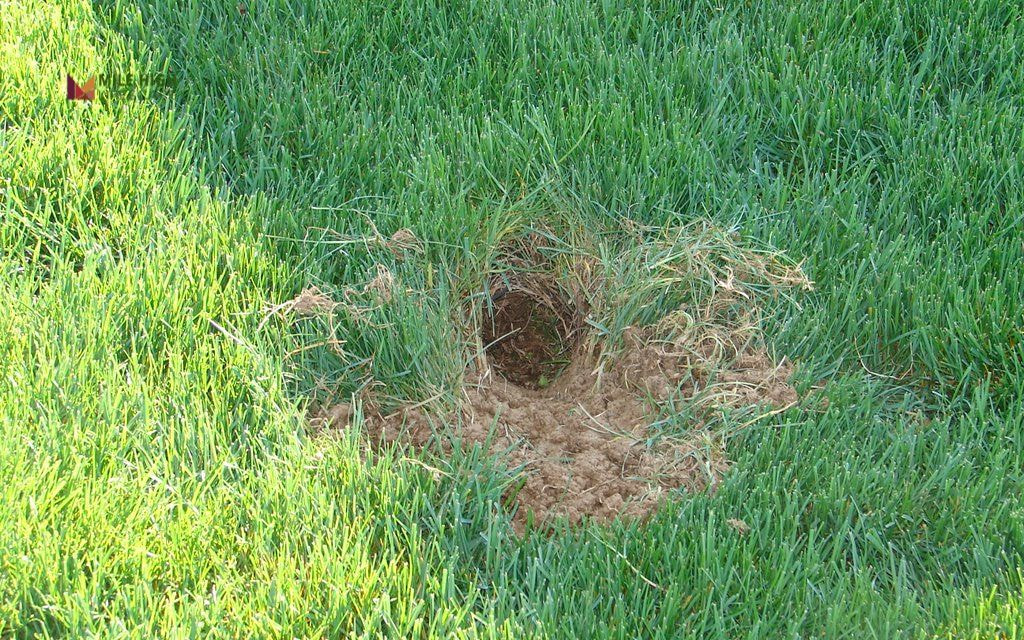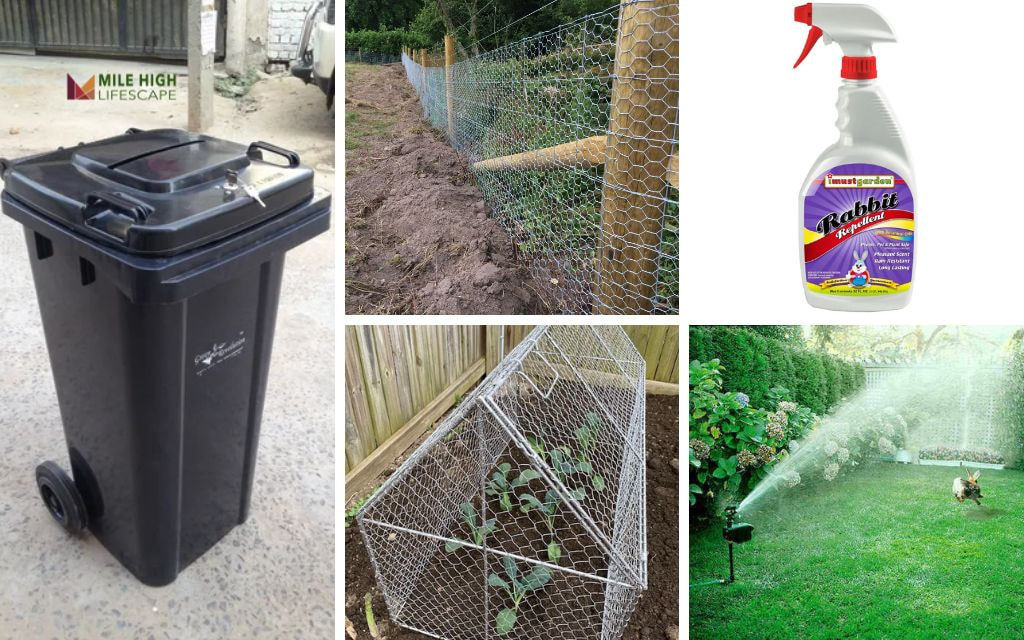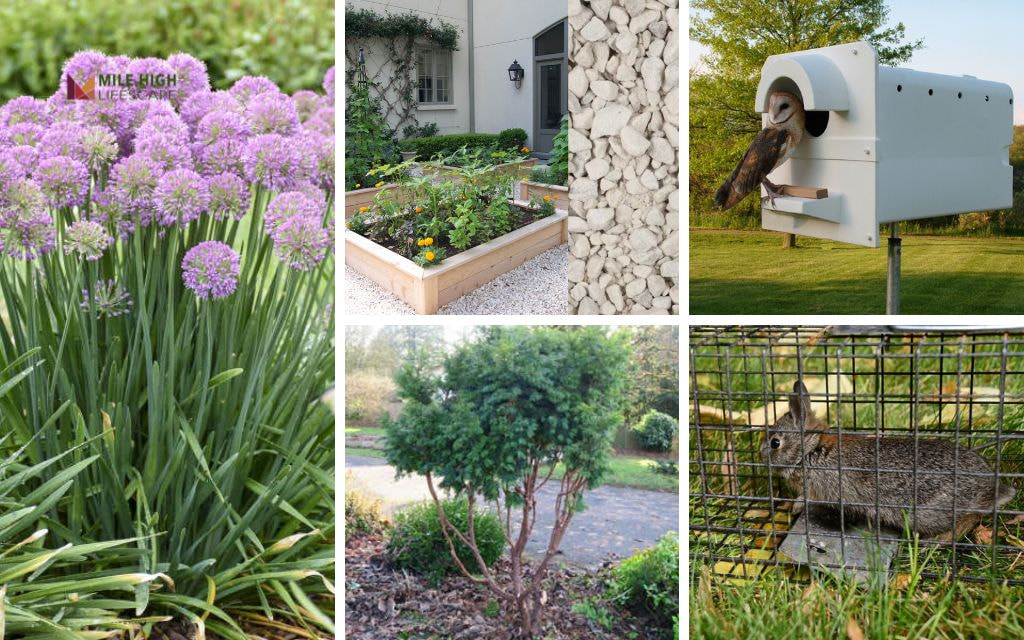How to get rid of rabbits in my yard? To discourage rabbits from entering your yard, use an integrated strategy: install barriers, remove dense vegetation, and apply either natural or chemical deterrents.
Rabbit activity has increased throughout Denver neighborhoods in recent years. These animals don’t just nibble on a few plants – they systematically damage vegetables, ornamental flowers, shrubs, and create unsightly patches in lawns.
To effectively deter rabbits from your yard, implement multiple strategies focusing on habitat modification, physical barriers, and strategic deterrents. In this guide, you’ll discover legal, humane, and effective methods that work specifically in Denver’s climate and ecosystem.
Signs Rabbits Are in Your Yard
Identifying rabbit activity early helps minimize damage to your landscape.
Look for these telltale signs:
- Clean-cut plant damage: Rabbits leave smooth, angled cuts on stems and shoots, unlike the ragged edges left by insects or deer.
- Round, pea-sized droppings: Fresh droppings appear dark and gradually lighten with age, often found in clusters.
- Shallow depressions in grass: Female rabbits create fur-lined nests approximately 4-5 inches wide for their young.
- Distinct tracks: Rabbit footprints show a distinctive pattern with larger hind feet impressions and smaller front paws.
- Gnawed bark: During winter, rabbits strip bark from young trees and shrubs, causing circular damage around the base.

How to Get Rid of Rabbits in My Yard: 10 Proven, Humane Methods
Rabbits may look harmless, but left unchecked, they can do real damage to lawns and gardens. If you live in the Denver Metro area, understanding humane, legal, and effective strategies to manage rabbit activity is essential.
Here are 10 proven methods to keep them out – safely and within the law:
- Remove attractants
- Install rabbit fencing
- Use natural repellents
- Protect individual plants
- Use motion-activated devices
- Plant rabbit-resistant vegetation
- Introduce physical barriers
- Encourage natural predators
- Modify the landscape
- Trap as a last resort (legally)
#1: Remove Attractants
Eliminate food sources and habitat that draw rabbits to your property. Clear fallen fruits, secure compost bins, and remove brush piles. Maintain a tidy yard with regular mowing and trimming to reduce hiding places. This foundational step makes your property less appealing to rabbits searching for food and shelter.
#2: Install Rabbit Fencing
Physical barriers provide the most reliable protection against rabbits. Use hardware cloth or chicken wire that extends at least 24 inches above ground with 1-inch or smaller mesh openings.
Bury the fence 6-10 inches underground and bend the buried portion outward to prevent burrowing. For Denver properties, ensure fences comply with local HOA regulations while maintaining effectiveness against our local cottontail species.
#3: Use Natural Repellents
Several natural substances deter rabbits through smell or taste. Create sprays using garlic, hot pepper, or vinegar diluted with water. Commercial options containing predator urine or blood meal also prove effective.
Apply repellents weekly and after rainfall for consistent protection. Denver’s variable spring weather requires more frequent application during our precipitation cycles.
#4: Protect Individual Plants
Shield valuable plants with individual barriers. Place wire cages around young trees and shrubs, ensuring they extend several inches away from the plant.
For vegetable gardens, implement floating row covers that allow sunlight and water to reach plants while blocking rabbit access. This targeted approach preserves landscape aesthetics while protecting vulnerable specimens.
#5: Use Motion-Activated Devices
Startle rabbits with motion-activated sprinklers or lights. These devices create unpredictable disturbances that prevent rabbits from feeling secure in your yard. Place them near entry points or frequently damaged areas for maximum effectiveness.
Denver’s water conservation rules allow for this minimal water usage as it serves pest management purposes.

#6: Plant Rabbit-Resistant Vegetation
Incorporate plants rabbits typically avoid into your landscape design. Species with strong scents, tough textures, or toxic properties naturally deter rabbits. Consider lavender, sage, ornamental grasses, yarrow, and Russian sage – all well-adapted to climate. Create perimeter plantings of these rabbit-resistant species to form a natural barrier around more vulnerable plants.
#7: Introduce Physical Barriers
Create uncomfortable terrain with decorative rock mulch or gravel around garden beds. Rabbits avoid crossing rough surfaces that hurt their paws. Strategically place these materials in pathways rabbits use to access your yard. This approach enhances landscape design while functioning as an effective deterrent.
#8: Encourage Natural Predators
Support natural rabbit population control by creating habitat for their predators. Install owl boxes, hawk perches, or brush piles for foxes. Avoid using rodenticides that could harm these beneficial predators.
The urban wildlife corridor supports several rabbit predators including red-tailed hawks and great horned owls when properly accommodated.
#9: Modify the Landscape
Eliminate hiding places through strategic landscape design. Remove dense ground covers, raise deck foundations, and trim lower branches of shrubs to create exposed areas rabbits avoid. This approach maintains aesthetic appeal while reducing rabbit habitat. Our clients report significant reductions in rabbit activity after implementing these modifications.
#10: Trap as a Last Resort (Legally)
If other methods fail, consider trapping as a final option – but understand the legal requirements. In Colorado, wild rabbit trapping requires proper permits from Colorado Parks & Wildlife. Live traps must be checked regularly to prevent animal suffering. Professional services can handle this process legally and humanely when necessary.

What Not to Do When Dealing with Rabbits
Certain rabbit control methods prove ineffective, unsafe, or illegal in Colorado. Avoid these problematic approaches:
- Poisoning rabbits violates Colorado wildlife regulations and poses serious risks to pets, children, and other wildlife. Toxins can spread through the ecosystem, causing unintended harm to beneficial species.
- Harmful chemical repellents containing toxic ingredients may damage your landscape and potentially contaminate groundwater. These substances often wash away quickly in Denver’s frequent spring storms, providing minimal benefit despite their environmental impact.
- Relocating wildlife without permits breaks state law and typically fails as a control strategy. Relocated rabbits face high mortality rates, and new rabbits quickly fill the vacated territory. Colorado Parks & Wildlife strictly regulates wildlife relocation to prevent disease spread and ecosystem disruption.
Instead, focus on the humane, effective methods outlined above that work with natural behaviors and ecological principles.
What Attracts Rabbits to Your Yard?
Rabbits seek three primary resources: food, shelter, and safety from predators. Denver’s urban environment provides an ideal habitat for them.
Our irrigated lawns create lush vegetation in an otherwise semi-arid climate, offering abundant food sources.
The rabbits particularly favor:
- Tender green shoots and seedlings
- Clover and fresh grass
- Vegetable garden plants, especially lettuce and beans
- Young tree bark during winter months
- Ornamental flowers and bulbs
Rabbits also require adequate shelter, finding refuge in:
- Dense shrubs and evergreen bushes
- Brush piles and yard debris
- Spaces beneath decks or sheds
- Tall ornamental grasses
- Abandoned burrows from other animals
How to Prevent Rabbits from Coming Back
Maintaining a rabbit-free yard requires ongoing vigilance. Implement these preventative measures:
- Conduct weekly yard inspections to identify and repair fence breaches promptly. Rabbits exploit even small gaps in barriers.
- Refresh repellents according to a seasonal schedule: monthly in winter, bi-weekly during spring breeding season, and weekly during summer growing season.
- Establish a perimeter defense system combining rabbit-resistant plants, rock barriers, and strategic repellent application.
Perform seasonal maintenance each spring and fall:
- Spring: Check for winter damage to fences and repair before breeding season
- Fall: Clear leaf debris that could provide nesting material and cut back dense vegetation
These consistent practices create long-term protection against rabbit infestations.

When to Call a Professional Wildlife or Landscape Service
Despite diligent efforts, some situations warrant professional intervention. Consider contacting professionals when:
- Rabbit populations remain persistent despite implementing multiple control strategies. Professional services access specialized equipment and techniques not available to homeowners.
- Significant landscape investments face ongoing damage. Our comprehensive approach protects valuable plants and design elements through customized protection systems.
- Structural damage affects fencing, irrigation, or landscape features. Professional repairs prevent escalating damage and restore functionality quickly.
- Rabbits have established multiple burrows on your property. Professional removal ensures complete resolution without leaving areas that could attract new rabbits.
Conclusion
Managing rabbit populations requires a comprehensive approach combining habitat modification, physical barriers, and strategic deterrents.
By identifying activity early and implementing the right combination of methods for your specific situation, you can effectively protect your landscape while respecting wildlife regulations.
Remember that persistence matters – rabbits adapt quickly, so varying your approach and maintaining preventative measures yields the best results. With the right strategies, Denver homeowners can maintain beautiful, rabbit-free landscapes throughout the year.
For persistent problems or professional assistance with rabbit management, contact a professional team that provides comprehensive solutions tailored to Denver’s unique climate and wildlife challenges.
Frequently Asked Questions (FAQs)
How do I permanently get rid of rabbits?
Permanent rabbit control comes through combining methods: install proper fencing, remove attractants, apply repellents, modify habitat, and encourage natural predators. No single solution works permanently, but a comprehensive approach consistently maintained will effectively manage populations long-term.
What does it mean when a rabbit keeps coming into your yard?
When a rabbit repeatedly visits your yard, it indicates your property provides essential resources – food, shelter, water, or nesting sites. The rabbit has established a territory that includes your yard because it meets its survival needs. Identify what specific resources attract it and modify those elements accordingly.
What do rabbits hate the most?
Rabbits strongly avoid predator scents (fox, coyote), certain plant odors (garlic, onion, mint), rough textures underfoot (gravel, stone), sudden movements or noises, and plants with bitter tastes or toxicity. They particularly dislike exposed areas without shelter, making habitat modification highly effective.
What smell will keep rabbits away?
Strong scents that repel rabbits include predator urine, garlic, vinegar, coffee grounds, blood meal, and essential oils (peppermint, eucalyptus). Commercial repellents containing these ingredients or putrescent egg solids also effectively deter rabbits through smell. Apply these around garden perimeters and near entry points.
Should I be concerned about rabbits in my yard?
Yes, rabbit presence warrants attention. Beyond landscape damage, rabbits can undermine structures through burrowing, carry ticks and fleas that affect pets, and attract predators like coyotes to your property. Early intervention prevents established populations that become significantly harder to manage.
